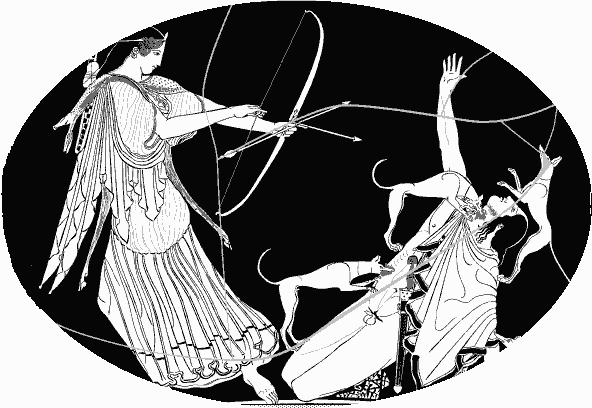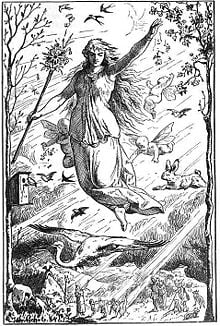Originally posted 2013-07-08 16:49:11.
Hot cross buns. That’s what this article is about. So why do I have a picture of a Roman sculpture of a bull’s head here instead of a nice snap of some hot cross buns?
Hot cross buns actually originated in Assyria as a part of worship of the Moon Goddess Ishtar. At least that is the earliest record we have of them. The Egyptians continued the tradition of offering cakes to their Moon-Goddess Hathor. They decorated the cakes with bull’s horns, as the ox was the preferred sacrifice of the Goddess. The cakes, therefore, were symbolic of the sacrificed bull, whose flesh would be eaten by worshippers.
Hathor has been identified with Ishtar and Astarte, who was worshipped by King Solomon, as mentioned in the Old Testament (1 Kings 11, 2), and to whom he erected a temple or shrine in Jerusalem.
Ishtar, in her turn, is the Akkadian form of Inana, the Sumerian Queen of Heaven, a title that was inherited by none other than Mary of Nazareth. As I will explain in my forthcoming book, Footsteps of the Goddess, all Goddesses are the same, because there is only one goddess, she just has many faces. The eating of sacramental cakes is a widespread element in Goddess-worship.
This sacramental cake and its use in prayer to the Goddess is also mentioned, in the Old Testament, by Jeremiah (Jer. 7, 18) where he says, “The children gather wood, and the fathers kindle the fire, and the women knead the dough, to make cakes to the Queen of Heaven”. Again Jeremiah (Jer. 44, 19) says, “And when we burned incense to the Queen of Heaven and poured out drink offerings unto her, did we make cakes to the Queen of Heaven”.
The Greeks turned Bull-buns into Cross Buns

The Ancient Greeks carried on the ritual of offering decorated cakes to the Goddess, this time in the form of Artemis, the moon goddess…who is also a derivative of Inanna through Ishtar. They called the cake a “boun”, which is a form of “bous”, the Greek word for ox, in reference to the horn-symbol on the cake. It is from “boun” that the English word “bun” comes.
The Greeks replaced the ox-horn symbol with a cross. This was done to symbolize the four quarters of the moon and to make it easier to divide the cake into four. The pieces were distributed to be eaten by worshippers at temples or shrines.
The Romans also ate these crossed cakes, at public sacrifices to Diana, their lunar goddess, who was just Artemis renamed. They bought them from vendors outside their temples: a practice against which St. Paul fulminated (1 Corinthians 10, 28). Two “buns”, such as these were found in the ruins of Herculaneum, which together with Pompeii was destroyed by the eruption of Vesuvius in A.D. 79.
The Anglo Saxon pagans had Cross Buns too
The pagan Anglo-Saxons adopted the use of these small crossed cakes in the worship of Eostre, otherwise known as Ostara, and by now the similarity of her name to Ishtar or Astarte should not be surprising. In fact, despite many detailed differences, the Teutonic mythology of northern Europe came from the same, older, Indo-European cultural beliefs as the Greek myths. The goddess of light and spring; it is from Eostre that the English derive the name Easter.

The custom of eating crossed bread or cakes became widespread across Europe, and the early church fathers adopted it and combined it with the Eucharist. The crossed bun or “boun” evolved into the Eucharistic bread or crossed wafers that St. John Chrysostom mentions in his “Liturgia”.
So the beloved custom of baking and eating hot crossed buns, almost invariably seen as part of a Christian tradition, into which it has certainly been adopted, is in fact far older and dates from long before the invention of Christianity.
With the spread of Christianity as the official religion of the Roman Empire, all these traditions of eating and sharing buns decorated with a cross became established throughout Europe, remaining popular long after the secular Roman Empire collapsed. Today, it is practised in every Christian part of the world, although some of the more obnoxiously Protestant sects condemn it because of its association with Goddess-worship. But then, so much of Christianity is based on reverence for the Goddess that to deny Her is impossible for any Christian.



![[kofi]](https://www.rodfleming.com/wp-content/uploads/2022/03/support-me-on-[kofi]-300x81.png)

